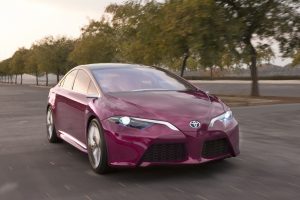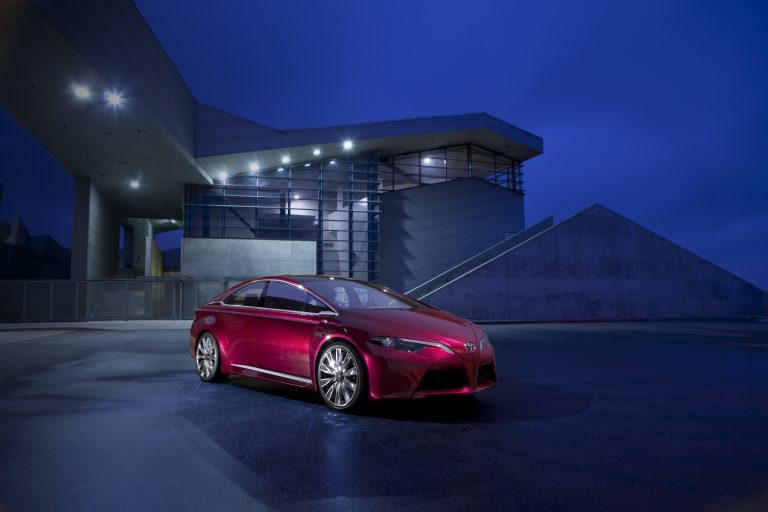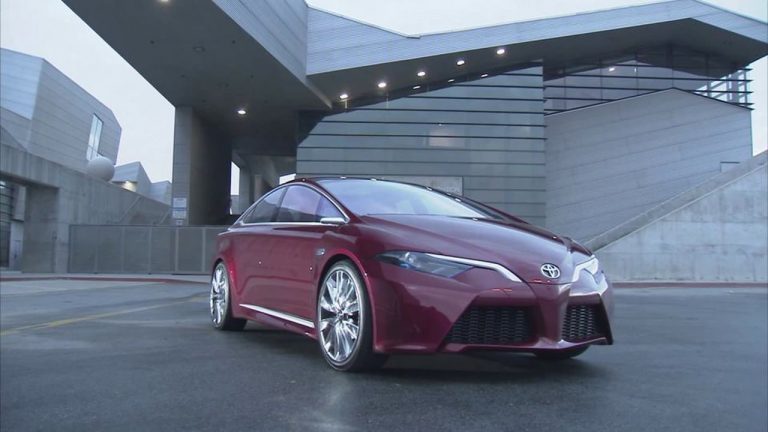Toyota NS4: The Next-Generation Toyotoa Plug-in Hybrid Electric Vehicle
- Plug-in hybrid technology taken beyond the Prius family
- New Toyota brand styling
- New interior technologies for convenience and higher fuel efficiency
- Bringing state-of-the-art safety features to the mainstream market
- First shown at NIAA Detroit, 2012
- European premier at the Geneva motor show 2012
NS4 is Toyota’s next-generation Plug-in Hybrid Electric Vehicle (PHEV) concept. Making its debut at the Geneva motor show, it responds to changing customer perceptions of environmentally conscientious motoring, taking PHEV technology a step beyond what Toyota has achieved with the Prius family.
As well the outstanding eco-credentials that are part-and-parcel of all models equipped with Toyota’s Hybrid Synergy Drive, it addresses greater customer demand for added value in areas such as advanced design, refined sensory quality, state-of-the-art safety features and more sophisticated driving involvement.
Exterior design
The NS4 concept signals a new design direction for Toyota that is aimed at creating an emotional connection with customers. It also represents a new interpretation of the aerodynamics of the current Toyota design language, with a low overall vehicle height and cab-forward stance.
The four-door, four-seat NS4 is based on a compact, next-generation platform, measuring 4,650mm long, 1,770mm wide and just 1,370mm high. Its 2,700mm wheelbase is the same length as that of the current Prius.
Aerodynamic efficiency is supported by the car’s low frontal aspect and roofline, linked by steeply raked A-pillars. The A-pillars themselves are particularly thin – not simply for the sake of elegant styling, but to offer a big improvement in visibility from inside the car. In spite of being very thin, the A-pillars remain strong enough to maintain roof roll-over integrity.
The front of the vehicle features a large, trapezoidal lower grille that represents a development of Toyota’s current design language, together with the keen-edged treatment of the narrow headlamp clusters, which are topped by signature thin daytime running lights.
Powered swan-wing doors make getting in and out of the car easy, with subtle, overlaid chrome detailing adding a sense of lightness to the concept. Elegant 19-inch alloy wheels are fitted with low rolling resistance 225/40R 19 tyres.
At the rear a large, trapezoidal bumper aperture reinforces the theme created at the front of the car, with aero-style lamp clusters wrapping around the sides of the vehicle and layering into the rear wing blisters. The sharp trailing edges of the lamps further function as an aerodynamic spoiler.
The practical rear design also allows for easy access to the luggage space.
Interior design technologies
Quality and comfort combine in the sweeping lines and strong individual forms in the cabin, which features eco-friendly materials and a fun and intuitive HMI (human-machine interface) that is built around a multi-touchscreen that looks and feels like a smartphone.
The simple-to-use touchscreen controls air conditioning, audio and navigation systems and quick presentation of vehicle and battery charge data, with least distraction to the driver. The system can even ‘learn’ driver preferences and habits, anticipating driver responses to specific environments and situations.
Cabin comfort is maintained through careful temperature control; all the glazing uses UV-blocking and heat-resistant glass. Four new glass technologies are introduced to improve visibility for the driver and mileage efficiency in both petrol and electric driving modes.
- Fluorine coated glass cause raindrops to form hemispherical shapes, improving visibility and eliminating raindrops. This technology is also used on the car’s solar roof panel.
- An integral, high-performance material creates an anti-fogging film.
- An ultra-violet-absorbing inner layer removes 99 per cent harmful UV rays.
- An anti-solar film with radio-wave transparency reduces cabin temperature without compromising the functioning of electronic devices.
A next-generation air conditioning system combines air curtain technology with immediate comfort ‘spot’ control.
The air curtain directs ventilation from the base of the windscreen, over the front and side windows and across the roof. This means traditional air outlets on the instrument panel are no longer required, improving the styling of the dashboard. The system can also direct air conditioning to specific points, to achieve quicker heating or cooling of the cabin.
Even the vehicle bodyshell itself has a heat-resistant coating; an insulated paint finish that suppresses increases in vehicle body temperature, even in full sun.
NS4 is equipped with a next-generation PHEV powertrain, incorporating a 2.0-litre petrol engine. Reductions in component size and weight and a rapid charging time help deliver better overall fuel economy, better acceleration and a greater all-electric driving range.
Advanced safety features
NS4 strengthens Toyota’s lead in developing active, passive and preventive safety technologies, introducing new state-of-the-art systems in the mainstream.
The concept is fitted with a next-generation Pre-Crash Safety (PCS) system which uses millimetre-wave radar and stereo cameras mounted on the front of the vehicle to detect and react to lane departure, pedestrians and other vehicles on the road ahead.
A driver assistance feature helps avoid collisions with other vehicles, roadside obstructions and pedestrians by applying the brakes and providing steering assistance. The system also emits near-infra-red beams to enhance PCS’s hazard recognition at night.
The Adaptive Driving Beam LED headlights help prevent oncoming drivers being dazzled. Using a camera positioned above the centre of the windscreen and partial shielding inside the headlights, it lets drivers keep near-full high beam illumination when driving at night.
The car’s Blind Spot Monitor uses sub-millimetre-wave radar to detect a vehicle in the adjacent lane and alert the driver using indicator lights on the upper dash panel.






